On June 1st and 2nd, Peoria will host the One State: Together in the Arts conference, a biennial event co-convened by the Illinois Arts Alliance and the Illinois Arts Council. It is the only statewide, multidisciplinary conference for Illinois arts leaders, practitioners, volunteers, students, educators and anyone interested in the successful integration of the arts in communities.
Conventions and conferences attract visitors to the region, where they spend the night in hotels, eat at restaurants, shop at local retail outlets, visit area attractions and fill up with gas. The estimated value to the Peoria-area economy of the One State conference is expected to be $80,000 to $90,000.
Working with the Peoria Area Convention and Visitors Bureau (PACVB), local arts organizations and a host of volunteers, ArtsPartners of Central Illinois spearheaded the collaborative effort to bring the conference to Peoria. What follows is a discussion with some of those who made it possible.
In Fall 2007, the Illinois Arts Alliance and Illinois Arts Council contacted organizations throughout the state who might be interested in hosting its 2009 conference. ArtsPartners responded by describing the rich arts and cultural activities in the Peoria area and why it would make an ideal host.
Terry Scrogum: The conference is every other year, and we try to hold one year in the Chicago area and the next in a downstate community. Peoria is centrally located and has a rich cultural community and a variety of great cultural assets.
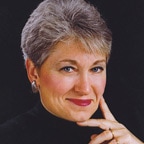 Suzette Boulais: ArtsPartners’ role was to showcase downtown Peoria as the ideal site for this type of conference since Peoria was in the heart of the state, within perfect driving distance for other statewide attendees. While we demonstrated the many arts and cultural activities and amenities right within walking distance of our downtown, the PACVB concentrated on finding the perfect hotel site for the conference at the right cost. Their role was to show that a conference that played in Peoria would be an affordable and economic choice for our statewide organizers, who were responsible for making the site selection.
Suzette Boulais: ArtsPartners’ role was to showcase downtown Peoria as the ideal site for this type of conference since Peoria was in the heart of the state, within perfect driving distance for other statewide attendees. While we demonstrated the many arts and cultural activities and amenities right within walking distance of our downtown, the PACVB concentrated on finding the perfect hotel site for the conference at the right cost. Their role was to show that a conference that played in Peoria would be an affordable and economic choice for our statewide organizers, who were responsible for making the site selection.
ArtsPartners serves all of the artistic disciplines, and the One State conference will open premium networking opportunities to the whole of our constituency. Artists from around the state will come together to exchange ideas across the spectrum of the individual artist’s experience and needs. ArtsPartners’ total dedication to advancing the arts makes it the perfect go-to organization to serve as local host. We exist to do exactly the things we are doing for
this conference.
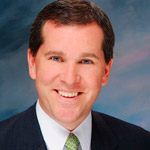 Brent Lonteen: Suzette asked me to lunch back in 2007 with Lisa May Simpson, program director for the Illinois Arts Alliance, and some ArtsPartners Board members. I had only been on the job a few months, and Ms. Simpson was asking for support for her organization. I asked her where the group’s biennial conference was held, and she told me they rotated between Chicago and Champaign. In a kind way, I told her she’d get more support from Peoria if she brought the conference here. True to her word, she convinced her board to bring it here for 2009. But Peoria has worked hard to earn it. There is a whole team of people working on details, itineraries, etc. who have met regularly for months to make sure this event runs smoothly.
Brent Lonteen: Suzette asked me to lunch back in 2007 with Lisa May Simpson, program director for the Illinois Arts Alliance, and some ArtsPartners Board members. I had only been on the job a few months, and Ms. Simpson was asking for support for her organization. I asked her where the group’s biennial conference was held, and she told me they rotated between Chicago and Champaign. In a kind way, I told her she’d get more support from Peoria if she brought the conference here. True to her word, she convinced her board to bring it here for 2009. But Peoria has worked hard to earn it. There is a whole team of people working on details, itineraries, etc. who have met regularly for months to make sure this event runs smoothly.
It’s important to me to show off this community’s accomplishments and devotion to the arts when I can, especially to folks from Chicagoland. This is a great opportunity to showcase all of the local talent we have, our successes in the arts events we host, and our devotion to arts diversity…which is such an important component of any community’s lifestyle. Hopefully, it will stoke the passions of the folks locally who are already behind the arts. But more importantly, I hope it helps attract new interest, and fosters future partnerships or relationships that might, as I like to say, make Peoria’s "dot" on the map a little bit bigger.
In early 2008, representatives from the co-convening organizations visited five potential sites over the course of several months, and in the end, they selected Peoria.
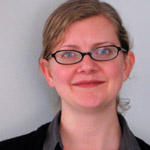 Lisa May Simpson: When determining the location for the One State conference, we took a few key criteria into consideration:
Lisa May Simpson: When determining the location for the One State conference, we took a few key criteria into consideration:
- Is the potential site an arts-friendly community? Do artists and arts organizations thrive there?
- Is there a strong arts service organization or local arts agency that is able and willing to act as a leader in bringing the host community together, engaging as much of the local arts community as possible, and ensuring that conference attendees see all the best the community has to offer?
- Is the local convention and visitors bureau invested in making One State a success in their community? Do they understand the link between the arts and tourism?
- Other important factors included: access to centers of higher education and their staff, faculty and other resources; availability of central meeting space with nearby dining and cultural venues; and accessibility of the community from other regions of the state.
We change the location of the conference each time it is held in order to give One State participants an opportunity to experience and learn from the members of different communities. It’s our hope that the time participants spend in each host community will inspire them to return and explore even more fully.
We visited Rockford, Schaumburg, Bloomington, Decatur and Peoria. Peoria met all of our criteria! It has a thriving arts community, strong leadership in the form of ArtsPartners, an enthusiastic and willing CVB, interesting meeting space and beautiful natural areas to boot.
Once the host city was chosen, a conference theme had to be decided upon. In the fall of 2008, the One State marketing team selected See Change.
Simpson: The theme was developed by the One State leadership team, which consists of 11 members representing regions throughout Illinois and staff from the Illinois Arts Alliance and Illinois Arts Council.
The theme of See Change began with a conversation among the three conference co-chairs (Duffy Armstrong, Stephen Cummins and Camille Wilson White) during the early summer of 2008. Change was thick in the air—politically, economically and technologically. Though much was (and is) uncertain, it was very clear that we were in the midst of a sea change.
In developing the theme, we returned to two quotes. The first was from Margaret Meade: “Never doubt that a small group of committed citizens can change the world. In fact, it is the only thing that ever has.” The second was from Mahatma Ghandi: “Be the change you wish to see in the world.”
See Change plays on the sea change we are in the midst of, while also offering a positive perspective: the arts community is not simply subject to the forces of external changes being thrust on us. We are capable of envisioning and creating change—both for ourselves and our communities. Together, we can envision the change, make it happen and see the results of our work.
A request for proposals for workshop presenters and programs was distributed. In early 2009, the program committee sifted through the responses to select workshops that reflected the theme.
Simpson: The criteria for presenters and programs included:
- Does the proposal address the conference theme?
- Is the proposed session relevant to our audience?
- Are the presenters effective and engaging?
- Will the proposed session contribute to a balanced and complete conference program?
All sessions were selected to address some element of the conference theme, whether from the perspective of creating and sustaining effective internal organizational change, tuning into and working with the environmental changes in which arts administrators seek to thrive, or gauging and strengthening the local, national and international impact of their work.
The location of each conference greatly informs the overall feel. The host committee, led by Suzette Boulais and Robin Barnes, has been hard at work planning two very rich arts tours for attendees to choose from on the first night of the conference and recruiting Peoria-area artists to perform throughout the Hotel Pere Marquette during the conference, creating the feel of a street fair filled with performances and visual arts happenings. Both of these elements are unique to the 2009 conference and a reflection of the Peoria arts community’s imagination and hard work.
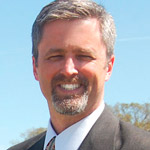 Doug Johnson: We received about 30 to 40 proposals, which covered a wide range of topics. Some were very specific to the discipline, and most looked at arts partnering and the coming together of arts
Doug Johnson: We received about 30 to 40 proposals, which covered a wide range of topics. Some were very specific to the discipline, and most looked at arts partnering and the coming together of arts
organizations.
Presenters were selected by the quality of their presentations, and we wanted to have a range of subjects. We had many good proposals, so the big challenge was that we only had a specific amount of time for the workshops at the conference.
All the topics key right into See Change. From the economy to social and generational changes, we can discuss how we tap into this idea and the changing media, and promote art. The topics engage in a discussion of art and also offer a “toolbox” to help the community. This conference is a great opportunity for those in the arts, but also for local business leaders to expand skill sets and consider our creative class in a changing economy.
In March 2009, marketing efforts revved up. They will continue until June, when the conference takes place.
Simpson: Our marketing messages this year address the nervousness in the air as a result of the current economic crisis. Now is not the time to go it alone, nor is it the time to keep doing things the way we’ve always done them and hope for the best. Now, more than ever, it is critical that we band together with colleagues, develop a network of support, build partnerships and learn new ways of surmounting the challenges we all face.
The conference is being marketed using a variety of media: the One State website (artsalliance.org/conference.shtml), Facebook, postcards and brochures, as well as email communications and a blog. Members of the planning committee are active in sharing information and messages with their own networks, as are local arts agencies and arts service organizations throughout the state.
A variety of activities were planned outside of the conference to show off the history, arts and culture of central Illinois.
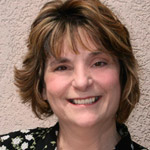 Kathy Chitwood: It has been a truly collaborative process. Things began shortly after the Peoria area was chosen as the conference site, and it began by “putting out the call” and bringing together the arts community to brainstorm ideas. We went crazy with all the fabulous things we wanted to share about this community and its colorful arts scene. Long lists of “possibilities” were created. As time passed, we began to receive more definition from the Illinois Arts Alliance on some of their interests and needs, and that meant we could begin shaping our plans.
Kathy Chitwood: It has been a truly collaborative process. Things began shortly after the Peoria area was chosen as the conference site, and it began by “putting out the call” and bringing together the arts community to brainstorm ideas. We went crazy with all the fabulous things we wanted to share about this community and its colorful arts scene. Long lists of “possibilities” were created. As time passed, we began to receive more definition from the Illinois Arts Alliance on some of their interests and needs, and that meant we could begin shaping our plans.
As host site, our biggest responsibility is to present the event we are calling "Monday Night with the Arts." We tried to blend a variety of arts and history into each of the tours and also be sure to highlight Peoria itself. We are featuring performances by musical and visual artists throughout all of the tours.
The conference has the potential to help Peoria economically, creatively and intellectually, bringing together some of the finest artists in the area and drawing visitors from all over the state.
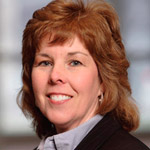
Robin Barnes: It is an honor to host such an event that will highlight the Peoria area’s rich art community. In the convention world, we consider this a familiarization tour. The conference is designed to bring people together to learn and network, as well as show off what Peoria has to offer. We hope they will tell people they meet about the area and perhaps come back to "play in Peoria" again. This is a great promotional vehicle that the PACVB can use to sell other conventions.
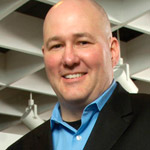 Stephen Cummins: One State really gives a community the opportunity to showcase to people from around Illinois what is so wonderful about their city and their arts community. I remember the first time I visited Peoria, I was struck by the natural beauty of the city, the trees, the river, the beautiful homes…and I am certain other first-time visitors will have the same experience.
Stephen Cummins: One State really gives a community the opportunity to showcase to people from around Illinois what is so wonderful about their city and their arts community. I remember the first time I visited Peoria, I was struck by the natural beauty of the city, the trees, the river, the beautiful homes…and I am certain other first-time visitors will have the same experience.
Boulais: The number of guests who come to the conference will provide a short-term influx of entertainment and hospitality spending, but in addition, we are confident that most will leave thinking that Peoria is a place they should visit again, with a more focused and leisurely itinerary. Further, from a formula the PACVB uses to determine the economic value of conferences of this size, the estimated value to our local economy is expected to be $80,000 to $90,000. That’s a nice chunk of change.
The intra-disciplinary exposure our artists will get with other artists will have both academic and creative benefits. It will be a marvelous learning opportunity for our art students and teachers to get a broad exposure to some great talent and current thinking in a short time span and a single place.
Again, we can expect repeat visits from these guests. But on the week of the conference itself, our tourist attractions and activities should see a spike in traffic as our guests explore all that Peoria has to offer. Certainly we will be promoting Peoria activities to the conference attendees.
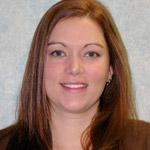
Brooke Leverton: This is a great opportunity for Peoria to show its artistic colors to the entire state. We have a very active artistic community, strong community theaters and a good backbone holding everything together in ArtsPartners. Being one of the oldest settlements in Illinois, our historical aspect should also be appealing to conference attendees. (Most people are not aware that Peoria is older than Chicago!) The wide variety of teachers, artists, students, etc. that will attend the conference will connect with other colleagues in the Peoria area while here, making for future communication and development of our artists and teachers.
While arts organizations face cutbacks and belt-tightening just like the rest of us, a conference like this can bring people together to help address those issues.
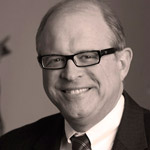 Scrogum: Given the nature of the economy right now, and the fact that economics affects the cultural community in many ways, it’s important for people and organizations to get together and hear some ideas about how to address those issues, but also have the opportunity to talk face to face and look for opportunities for collaboration.
Scrogum: Given the nature of the economy right now, and the fact that economics affects the cultural community in many ways, it’s important for people and organizations to get together and hear some ideas about how to address those issues, but also have the opportunity to talk face to face and look for opportunities for collaboration.
It’s important for the arts community in any time, but especially when we’re undergoing such dramatic funding issues, both from the public and private sectors. Seeing the kinds of needs that people have and how the arts community can address those needs when they’re trying to deal with financial setbacks of their own. It’s a time of getting together and being supportive of one another and looking for new and innovative ways to address those things.
This conference is specifically about looking for ways to address some of the issues that are facing organizations right now—everything from how to use social media to making sure that we’re sure of exactly what our core mission is and how we can best meet the needs of the people we serve. It’s also good to be looking at your downtown areas as developing those key economic drivers.
The One State: Together in the Arts conference takes place June 1st and 2nd at the Hotel Pere Marquette. A variety of workshops will be held on topics such as: “Art & Communications in a Changing Digital Landscape,” “Developing Downtown as a Key Economic Driver,” “Leading Change from the Grassroots,” “Building an Effective Board” and “Philanthropy in a Changing Economy.” Keynote speaker Liz Lerman, choreographer and founding artistic director of the Liz Lerman Dance Exchange, will lead participants on a guided tour of new possibilities in the cultural domain.
“A lot of work has gone into this conference,” said Boulais, “and it will be a great opportunity for Peoria-area citizens, and those from all over Illinois to get together and talk about, not only art management and best practices, but how we can go about implementing the theme, See Change, in Peoria and beyond.” iBi
ARTS AND THE ECONOMY
Arts organizations are often overlooked as economic drivers, but in addition to enriching the local culture and quality of life, they attract tourists and provide jobs.
- There are approximately 100,000 nonprofit arts organizations in the U.S., which spend $63.1 billion annually. Not only do these organizations employ performers and curators, they also employ accountants, designers, plumbers and engineers.
- A 2007 report by Americans for The Arts estimated that the nonprofit arts industry generates $166.2 billion annually in economic activity, resulting in $29.6 billion in federal, state and local tax revenues.
- Visitors attending arts activities across the state have contributed nearly $5 billion to the Illinois economy over the past seven years.
- A report by Goitein and Highfill, “Arts Spending in the Peoria Area and Its Economic Impact,” estimated the arts to be worth $39.58 million in the Peoria area in 2007.
- 1.15 million people attend arts events in the Peoria area each year, nearly 142,000 of which are from outside the area. They spend $7.96 million on entrance fees and $13.42 million on food and drink.
- Arts organizations in the Peoria area employ nearly 1,000 individuals, who are paid more than $12 million a year in wages and salaries. These organizations engage 2,500 volunteers, spend more than $3 million a year for rent and other non-personnel costs, and have assets—primarily buildings—worth more than $260 million.
- Nearly 4,000 people attend art classes in Peoria each year. Local art students spend $4.36 million on tuition and $6.35 million on living expenses.
- Studies show that the arts motivates kids to learn, inspires them to get better grades, keeps at-risk youth in school and helps them graduate on time. Schools that offer the most opportunities for the arts typically have the highest graduation rates.
Sources: ArtsPartners’ “The Arts as Big Business” and the Illinois Arts Alliance


